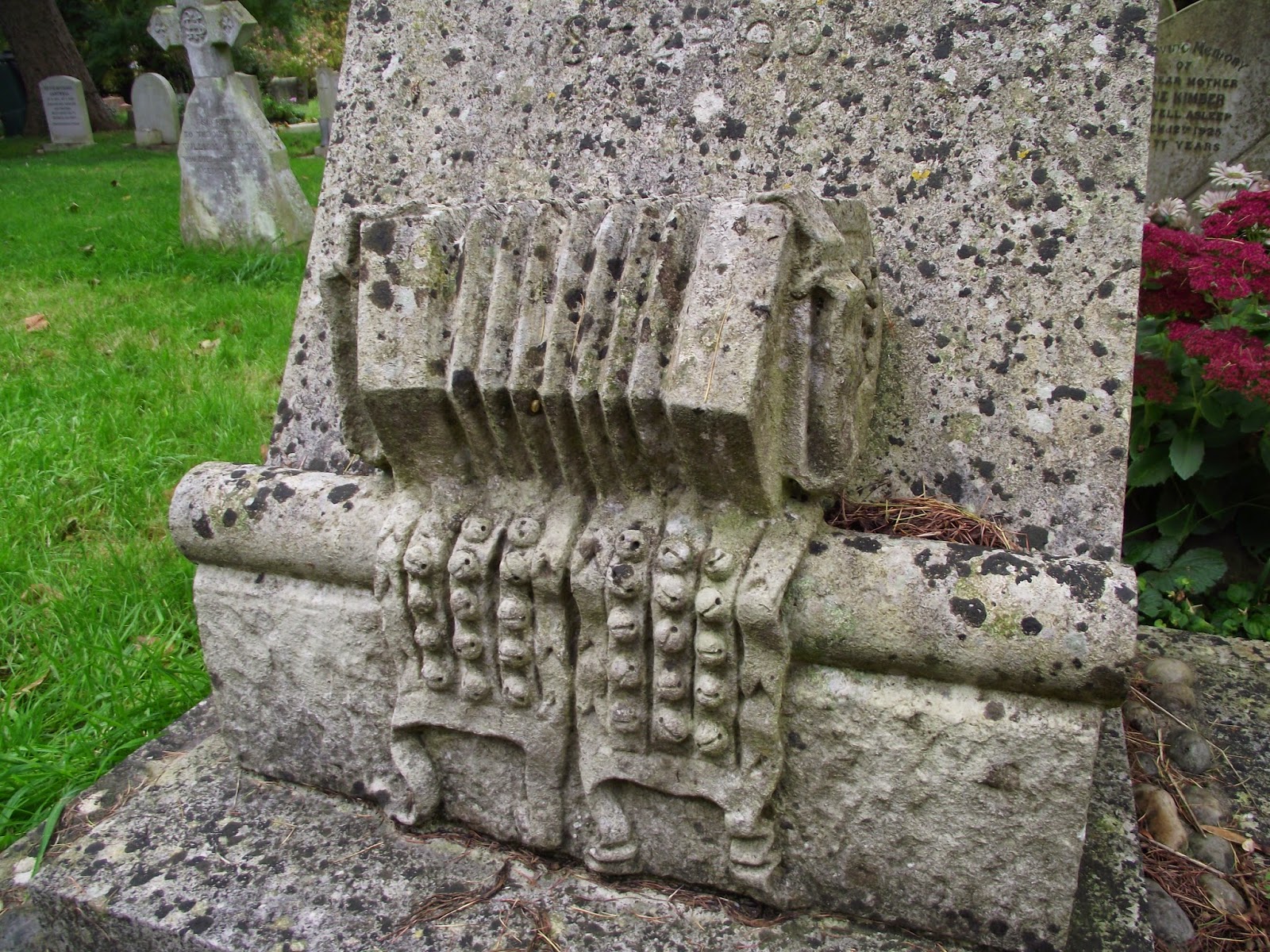Headington is not the kind of place one would expect to
visit on the trail of morris dancing heritage. A suburb of north Oxford strung
out along the main road towards London, it is in parts cheerfully shabby, and in other places, includes the large Victorian villas typical of so many
of the city’s suburbs. It is certainly a long way from the solidly rural
settings which most people associate with traditional morris dancing. However,
it has an important place in the history of traditional dance in England, for
here, on Boxing Day in 1899, Cecil Sharpe first heard a Headington builder
William Kimber play traditional morris tunes, when the Headington Quarry morris
team danced out at Sandfield Cottage, where Sharp and his family were staying
with his mother-in-law.
William Kimber became a key figure, as both a dancer and a musician, in the Morris revival led
by Sharpe and Mary Neale. Unlike other known
figures associated with traditional morris or the early stages of the revival,
Kimber has left a mark on the local landscape – it is possible to engage in a
form of musical journey around Headington in the footsteps of the revival.
As a morris dancer, for me, there was an element of pilgrimage, but as an
archaeologist and someone interest in how ancient and modern landscapes act as
sites of memory, it is fascinating excursion into a musical landscape.
In 1958, a new road in Headington Quarry was named William
Kimber Crescent- as far as I know the only road in Britain named after a morris
dancer. Kimber himself officiated at the opening ceremony.
The following year,
there was another act of memorialisation for Kimber. Sandfield Cottage, the
place of the first meeting between Kimber and Sharp was demolished in the
mid-1960s. However, before this, in 1959, Kimber unveiled a plaque on the building recording
the events (Sharp had died in 1924). Following the demolition of the house, the
plaque was re-erected on of the new flats built on the site. It can still be
seen, incongruously, half-way up the wall just below a satellite dish. It is
not clear who arranged for the plaque to be erected; there is no further information
on the tablet itself – this is something for a little further research!
William Kimber died in 1961 and is buried in Holy Trinity
churchyard, Headington Quarry, just round the corner from CS Lewis, another
resident of Headington. Rather splendidly, his gravestone is decorated with carved
stone morris bells and a concertina – the inscription reads “WILLIAM (MERRY) KIMBER / Father of English Morris
1872–1961
Kimber
worked for most of his life as a builder. He built many houses in the area –
and around 1908 he built his own house Merryville (after his nickname Merry) at
42 St Anne’s Road. In 2011, the Oxfordshire Blue Plaque scheme awarded it with
a blue plaque reading “WILLIAM KIMBER / 1872–1961 / Headington Quarry morris
dancer and musician / Key figure in the English Morris / Dance
& Folk Music Revival / lived here at ‘Merryville’ / 1908–1961.
It is not the only Blue
Plaque to a morris dancer that I know of- Cecil Sharp has one at 4 Maresfield Gardens, Hampstead
and Mary Neale is commemorated by one in Littlehampton – although surprisingly I can’t find
one for George Butterworth. There is also one to R J Tiddy in
Ascott-under-Wychwood, which I’ll blog about soon. However, Kimber appears to
be the only original dancer to be thus commemorated as opposed to a revivalist
or a collector.
The final location on my
mini-pilgrimage was the Chequers in Beaumont Road, Headington. There is a
splendid photograph of the Headington Quarry team standing outside the pub
taken by the prolific Oxfordshire photographer Henry Taunt. The image was
probably taken around 1899 following the re-emergence of the side under the
stimulus of Percy Manning. It is one of a series of photos taken by Taunt
showing the dancers outside the pub and in the act of dancing. William Kimber
can be seen playing the fiddle rather than the concertina with which he is more
usually associated. The pub itself has been heavily restored- the wooden porch
with its licensing information has now gone. There is an even earlier image of
the Headington Team outside the Chequers taken just to the right of the porch in
1876 – Kimber was only four when this was taken. However, his father, also named William, can be seen in the back row of dancers next
to the fiddler.
In the wood
19 hours ago












